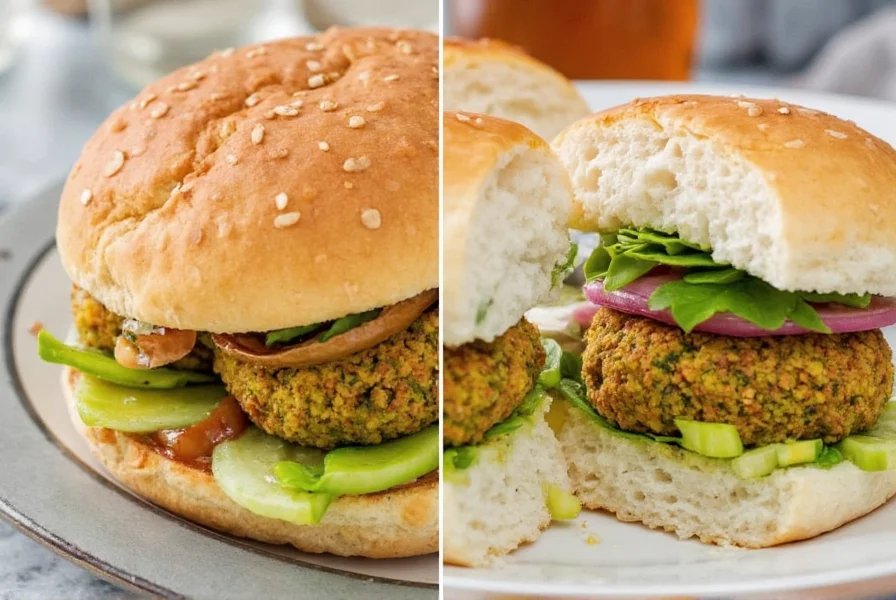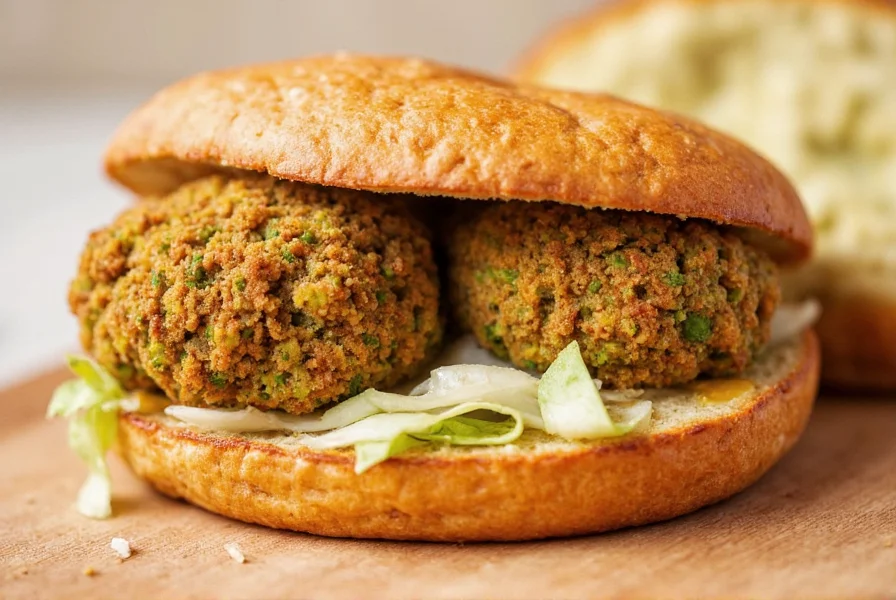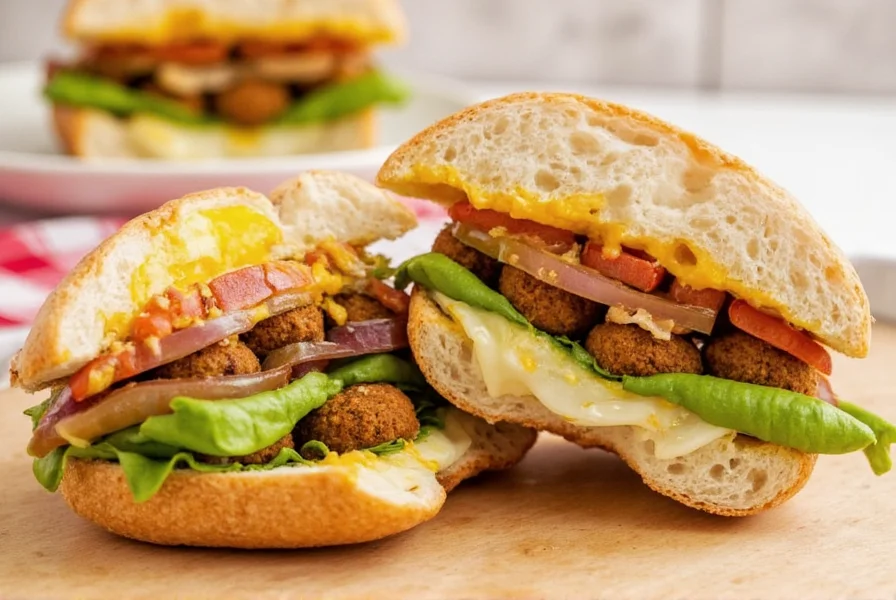Falafel Sandwiches Around the World: A Global Spice Adventure
Move over, burgers — there’s a new sandwich in town. Falafel sandwiches have quietly taken over street food stalls and gourmet menus alike, thanks to their crispy exterior, rich flavors, and versatile spice profiles. From the bustling streets of Cairo to the hipster cafes of Berlin, this beloved Middle Eastern staple has gone global — and brought its spices with it.
In this article, we’ll take you on a flavor-packed journey through the world of falafel sandwiches, explore their spiced roots, compare global variations, and offer tips on how to elevate your falafel game at home or in your restaurant. Ready to spice up your sandwich life? Let’s dig in!
Table of Contents
- The Spiced Roots of Falafel
- Global Twists on a Classic: How Countries Spice Up Falafel
- How to Make the Perfect Falafel Sandwich at Home
- Buying Guide: Best Ingredients for Authentic Falafel
- Spice Comparison Table: Regional Falafel Flavors
- Final Thoughts: The Future of Falafel Sandwiches
The Spiced Roots of Falafel
Falafel is believed to have originated in Egypt, possibly as a Coptic Christian dish served during fasting periods. Traditionally made from fava beans, it later evolved into the chickpea-based version we know today in other parts of the Middle East.

The magic lies in the spice mix:
- Cumin – Adds earthy warmth and depth
- Coriander – Brightens the blend with citrusy notes
- Parsley & Cilantro – Boosts freshness and color
- Garlic – Punches up the umami factor
- Onion powder – Enhances savory tones
These spices are ground into the chickpea base and then formed into balls or patties before being deep-fried to golden perfection.
Global Twists on a Classic: How Countries Spice Up Falafel
As falafel spread around the world, each region gave it a unique spin — often by adjusting the spice profile, texture, or serving style.

Lebanon & Israel: Crispy and Creamy
- Spice level: Medium
- Base: Chickpeas
- Served in: Warm pita bread with tahini sauce, pickles, and fresh salad
Egypt: Fava-Loving Origins
- Spice level: Mild
- Base: Fava beans
- Served in: Baguette or flatbread with tahini or garlic sauce
Turkey: Lightly Fried, Heavily Stuffed
- Spice level: Low
- Base: Chickpeas with finely chopped onions
- Served in: Wrap-style with lettuce, tomato, and yogurt sauce
Germany: Vegan Street Food Darling
- Spice level: Adjustable (often milder)
- Base: Traditional falafel mix with optional quinoa or flax additives
- Served in: Seeded bun with vegan tzatziki, beet hummus, and slaw
USA: Gourmet Goes Global
- Spice level: Customizable
- Base: Often baked instead of fried
- Served in: Ciabatta, brioche, or even sourdough with fusion sauces like chipotle aioli or mango chutney
How to Make the Perfect Falafel Sandwich at Home
Making your own falafel might seem intimidating, but with the right tools, ingredients, and a few insider tricks, you can create something that rivals your favorite street vendor’s version.

Essential Tips for Success
- Use dried chickpeas, not canned – They hold together better when fried and give that perfect crunch.
- Chill the mixture before frying – This helps bind the falafel and prevents them from falling apart.
- Don’t overcrowd the pan – Fry in small batches to ensure an even crust and avoid soggy centers.
- Bake if you want lighter falafel – Spread them on a lined tray and bake at 375°F (190°C) for 25–30 minutes, flipping halfway.
- Toast your bread – Whether it’s pita, wrap, or bun, a warm, lightly toasted base enhances flavor and texture.
Buying Guide: Best Ingredients for Authentic Falafel
If you’re aiming for authentic taste or planning to serve falafel sandwiches professionally, choosing the right ingredients is crucial. Here’s a curated list of top products that bring both quality and flavor to your kitchen or menu.
Top Picks for Falafel Ingredients
| Product | Features | Advantages | Best For | Occasion |
|---|---|---|---|---|
| SunOpta Organic Chickpeas | Non-GMO, organic, dried | Consistent texture, perfect for grinding | Home cooks and professionals | Weeknight meals, catering events |
| McCormick Ground Cumin | Pure spice, no additives | Strong aroma, bold flavor | Authentic falafel makers | Dinner parties, themed nights |
| Simply Organic Coriander Powder | Organic, sustainably sourced | Enhances brightness and complexity | Vegan restaurants, gourmet chefs | Lunch specials, tasting menus |
| Rapunzel Garlic Granules | Freeze-dried, no preservatives | Convenient, long shelf life | Busy kitchens, meal preppers | Quick service, weekend prep |
| Trader Joe’s Whole Wheat Pita Bread | Soft, sturdy, easy to toast | Perfect pocket for stuffing fillings | Street vendors, food trucks | Outdoor markets, festivals |

Spice Comparison Table: Regional Falafel Flavors
Each region uses a slightly different blend of spices to make their falafel stand out. Here's a quick breakdown of how they differ:
| Region | Main Spices Used | Flavor Profile | Unique Ingredient |
|---|---|---|---|
| Middle East (Classic) | Cumin, coriander, garlic | Earthy, herbaceous | Fresh parsley |
| Egypt | Cumin, onion powder | Mellow, nutty | Fava beans |
| Turkey | Paprika, black pepper | Smoky, peppery | Finely chopped onion |
| Germany | Caraway, turmeric | Warm, golden | Flaxseed (binder alternative) |
| United States | Smoked paprika, chili flakes | Spicy, smoky | Chipotle-infused tahini |

Final Thoughts: The Future of Falafel Sandwiches
Falafel sandwiches aren’t just a trend — they’re a culinary movement. As more people embrace plant-based eating and crave globally inspired flavors, falafel continues to evolve while staying rooted in tradition.

Whether you're a home cook experimenting with spice blends or a chef looking to add global flair to your menu, falafel offers endless possibilities. And with the right ingredients, technique, and creativity, you can make every bite a celebration of spice and culture.
So next time you’re craving something crunchy, satisfying, and packed with personality — skip the usual and go for falafel. Your taste buds (and your guests) will thank you.











 浙公网安备
33010002000092号
浙公网安备
33010002000092号 浙B2-20120091-4
浙B2-20120091-4